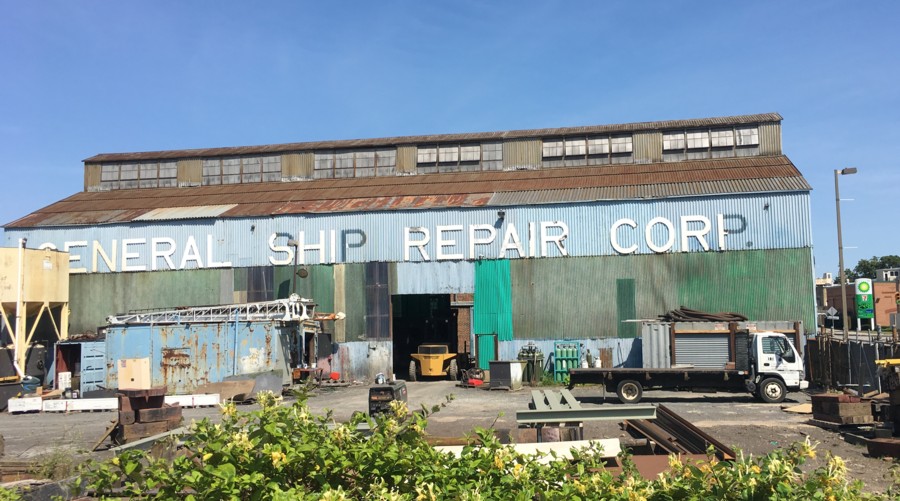
General Ship Repair in Baltimore is a perfect fit for the pier opposite the car float. It’s taken me the better part of the weekend to do the photo shopping of the wallpaper but that part is almost done.

General Ship Repair in Baltimore is a perfect fit for the pier opposite the car float. It’s taken me the better part of the weekend to do the photo shopping of the wallpaper but that part is almost done.
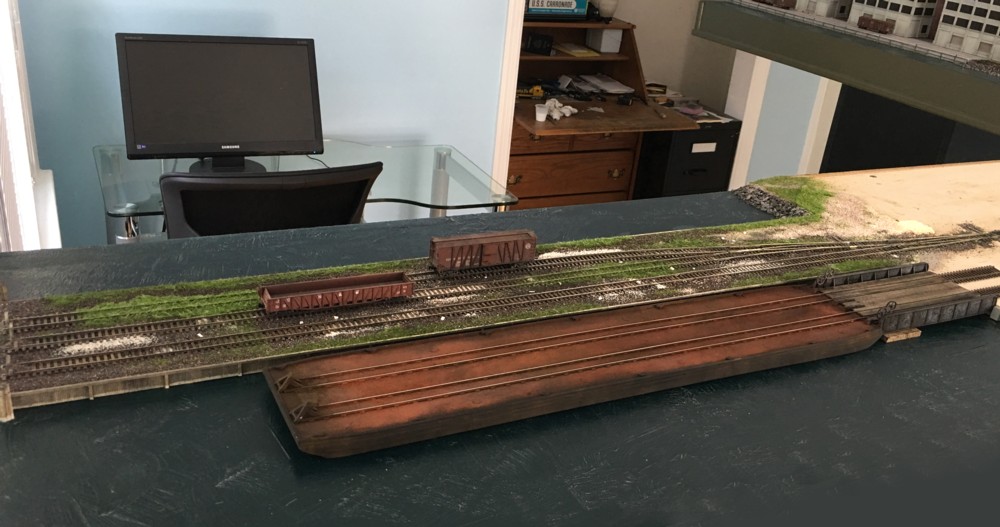
This weekend’s work completes the car float, pontoon float bridge, and vegetation on the pier yard. The car float is an un-modified Sylvan kit. The float bridge is a simple scratch build using styrene, an Atlas girder bridge, and assorted scraps and details from the scrap bin.
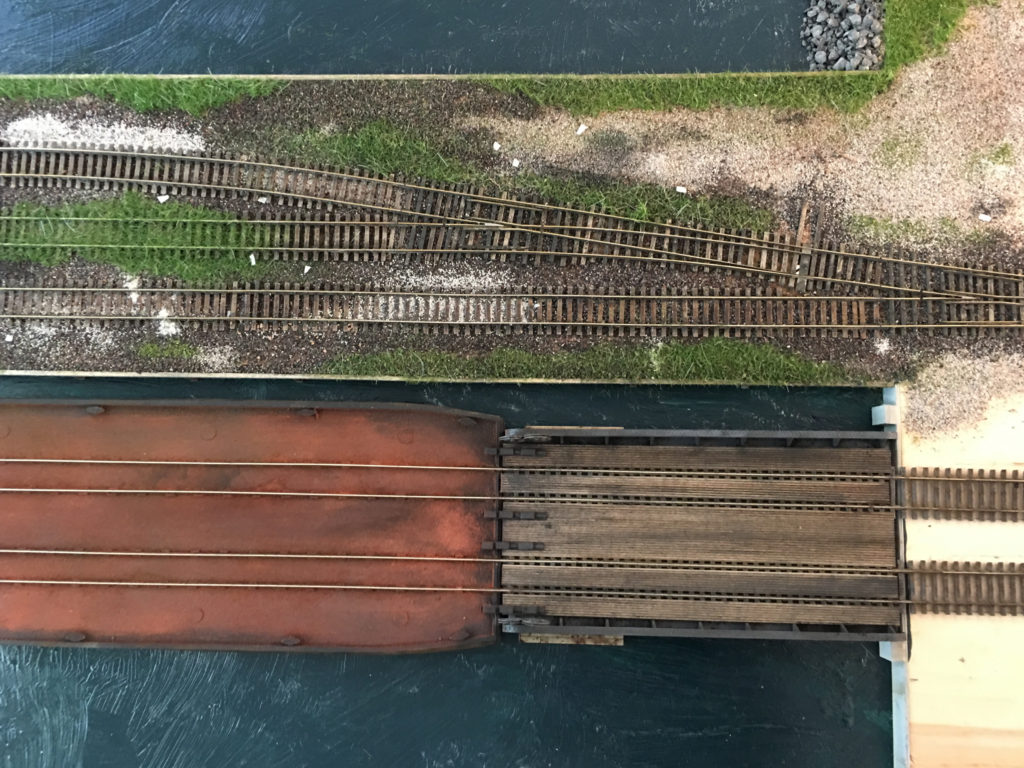
Here’s an overhead view of the finished area.
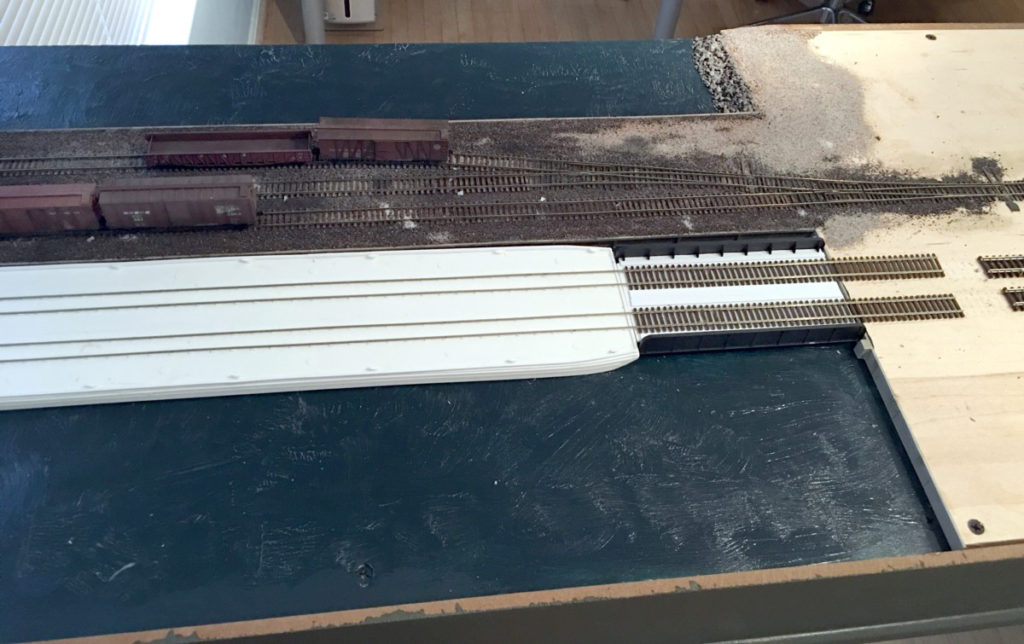
Last weekend the focus was on assembling the Sylvan car float and pontoon style float bridge. Volume 2 of the Flagg books really came in handy. One of the advantages of modeling a NY harbor theme is that there is so much information out there and so many selfless people willing to share it.
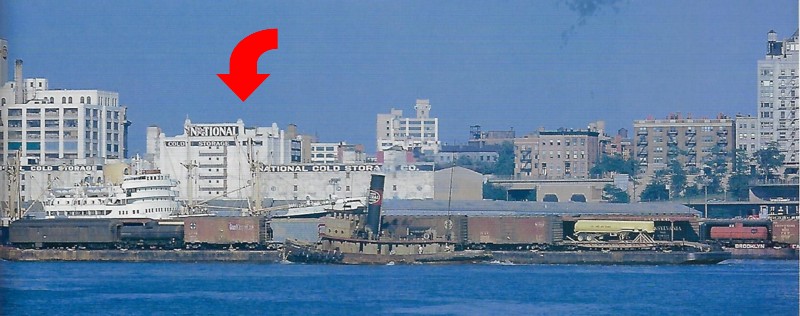
For some reason I never keyed in on the above Conrad Milster photo in the Flagg book. When I finally noticed the shot, it solved one of the remaining compositional issues with the Brooklyn Terminal. Specifically, what to place in the vacant space next to the three warehouses. The National Cold Storage complex fills the space, does so with balance, has that “right fit” look to it, and puts a Brooklyn stamp on things without being over the top about it.

Here’s where the scene will go. I also think I can add some form of temporary foreground plate extending the river forward for photographic purposes. Put the plate in, put some vessels on it, take the shot, and touch up the edges in photo shop.

Referring to the slow volume of blog posts lately, a number of concerned readers have expressed concern that I’m floating in the East River or have taken up slot cars as a new hobby. No worries, all is well. I’ve actually been putting in a lot of build time on the Brooklyn Terminal layout. However, when dealing with “Fine” N scale, and hand laid code 40 track, progress is slow. My focus of late has been on the pier yard. Real estate is scarce in Brooklyn and a number of the lines resorted to creating landfills or piers out into the bay to accommodate small yards. With a few op. sessions under my belt I felt the yard needed to be longer which required extending the bench work. Next, all of the turnouts had to be be scratch built and switch machines installed below. All that remains to be done with the yard now is some static grass and turnout tuning.